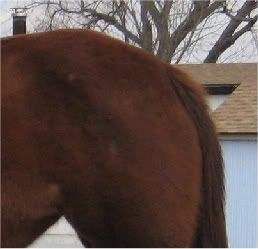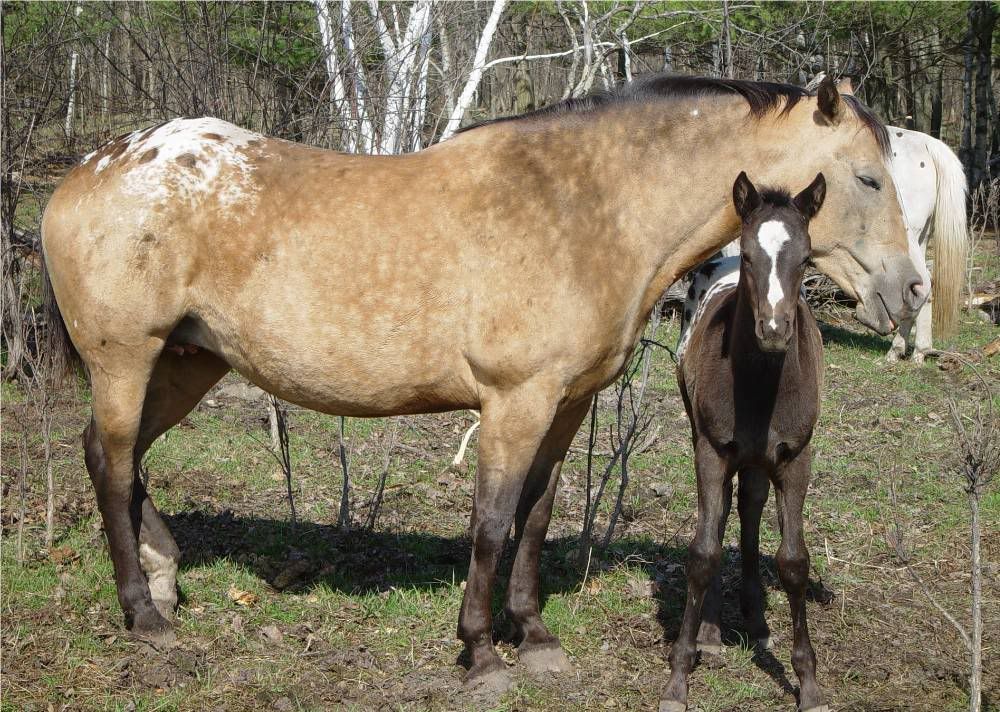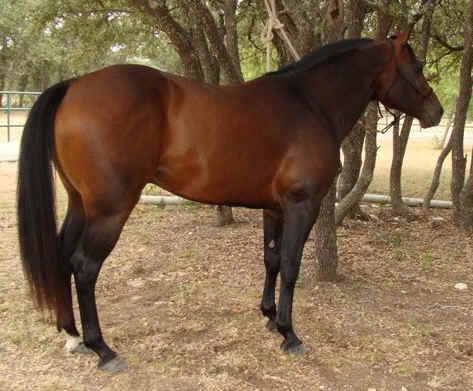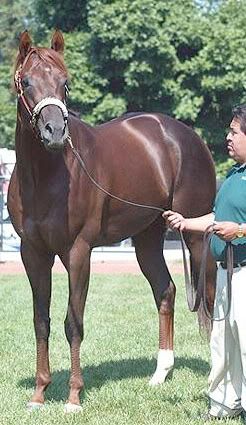From this point on, I will cover mini molds separately, in their own post. It's just easier on my brain.
This division is a little different than the other because with one or two exceptions, all stock horses adhere to the same standard. A Paint or Appaloosa is just a Quarter Horse with a flashier wardrobe.
If you missed it, I recommend reading my previous post on types within the Quarter Horse breed first. The same type of splits exist in the Paint and Appaloosa breeds, such as hunter, western pleasure, gaming, roping, reining, and racing types.
The only minor difference in between the foundation types. For Paints, they basically don't exist. No one breeds "Foundation Paints" because Paints were originally registered as Quarter Horses. They weren't split into their own registry for a few decades after the founding of the AQHA and there aren't (to my knowledge) any specialty breeders for them.
Foundation Appaloosas are based on remnants of the spotted horse of the Nez Perce. I'm going to dodge completely around the long and violent history involved here and say that the early Appaloosa breeders didn't have much original stock to work with. Arabian, Thoroughbred, and Quarter were all added in to beef up the gene pool over the years to create the modern Appaloosa. Foundation breeders are seeking to preserve the oldest bloodlines and minimize in the influence of DNA introduced by these other breeds.
Usually, today's Foundation Appaloosa has a large barrel, long shoulder, thick neck, and large head. Their hips are less heavily muscled then a modern stock horse, more like the hip of a gaited horse (such as a Tennessee Walking Horse) than a stock horse:
Model-wise, this body most resembles the Breyer Indian Pony. In general, I don't recommend this mold for halter classes, but with the right assignment I've seen them be pretty successful.
Foundation Quarter Horses are based on a different body type, but the principle is the same: minimize the influence of outside bloodlines. Foundation breeders oppose the influx of Thoroughbred DNA into the AQHA gene pool after 1940--without a hint of irony. Somewhere along the way, the foundation breeders seem to have lost track of the fact that the majority of their foundation stallions were Thoroughbreds. Remember Peter McCue? Registered Thoroughbred. And Wimpy? The known parts of his portions of his pedigree--and even most of the unknowns--are all Thoroughbred.
I feel better having gotten that out of my system.
Getting back to body type, a foundation quarter horses is just a Quarter Horse. They tend be on the rougher, bulkier side, but not outside the spectrum already represented in the AQHA.
Unlike the Appaloosa, I don't see an advantage to showing any of the current Breyer or Stone molds as a foundation. Except for the old Quarter Horse Gelding, none of the molds are unrefined enough to justify this assignment.
In this division, my favorite molds are the Lady Phase, Ideal Stock Horse, and Smarty Jones.
The Lady Phase has some minor quirks in the mold. One of her eyes is bigger than the other and her hooves aren't quite even. However, in the grand scheme of Breyer, these faults are extremely minor. I prefer the new long tailed version to the original, as I find the slightly higher tail set more flattering. A high tail set on a stock horse gives the hindquarters a feeling of "squareness" (as on the real life example above.) A very low tail set can give the false of impression of a goose rump.

A real goose-rump
A slight goose rump can be advantageous for some disciplines, but is a handicap in others.
The Ideal Stock Horse and the RRQH it's based on is an extremely popular mold. The musculature is very realistic, his proportions are great and his flaws are few. I have a few nitpicky problems with this mold, but they are mostly production related. He's a little downhill, but some of the different mane styles of this mold cover this better than others. When buying an ISH as a show horse, always set him on a table and look at him from the front. Some ISHs are "base narrow" meaning their hooves are too close together. This isn't the original mold, but the result of minor warping in the plastic. His off side nostril isn't always prepped correctly and should always be carved out on a custom.
I like the Smarty...probably a little too much. I have a large conga line of them in my own collection and show them frequently. Because of this extreme position, every muscle in the sculpture is tense. This gives him the impression of being bulkier than he really is. If he were standing still I think he would look more like this:
However, I like seeing him in stock classes because he makes a great racing bred or high percentage TB stock horse. My only fussy issues are his small ears and slight discrepancies in the lengths of his legs bones (they're off--just a little.)
These three molds are interchangeable between all stock classes except mustang. While I know people show them this way, an ISH or Lady Phase is not a mustang. These molds are so easily recognizable as QHs/Paints/Appaloosas that I don't buy them as mustangs or another breed type. Mustangs have some characteristics in common with the stock breeds and their type varies widely. However, I've never seen a mustang with that much muscle. If you encounter a mustang that looks like the bay in this post, please forward me pics. I wanna see.
Silver is the most popular mold in the mustang class. He reminds me of a ferret.
If I left out your favorite mold, please let me know in the comments and I will gladly tell you why. ;)
The Ideal Stock Horse and the RRQH it's based on is an extremely popular mold. The musculature is very realistic, his proportions are great and his flaws are few. I have a few nitpicky problems with this mold, but they are mostly production related. He's a little downhill, but some of the different mane styles of this mold cover this better than others. When buying an ISH as a show horse, always set him on a table and look at him from the front. Some ISHs are "base narrow" meaning their hooves are too close together. This isn't the original mold, but the result of minor warping in the plastic. His off side nostril isn't always prepped correctly and should always be carved out on a custom.
I like the Smarty...probably a little too much. I have a large conga line of them in my own collection and show them frequently. Because of this extreme position, every muscle in the sculpture is tense. This gives him the impression of being bulkier than he really is. If he were standing still I think he would look more like this:
However, I like seeing him in stock classes because he makes a great racing bred or high percentage TB stock horse. My only fussy issues are his small ears and slight discrepancies in the lengths of his legs bones (they're off--just a little.)
These three molds are interchangeable between all stock classes except mustang. While I know people show them this way, an ISH or Lady Phase is not a mustang. These molds are so easily recognizable as QHs/Paints/Appaloosas that I don't buy them as mustangs or another breed type. Mustangs have some characteristics in common with the stock breeds and their type varies widely. However, I've never seen a mustang with that much muscle. If you encounter a mustang that looks like the bay in this post, please forward me pics. I wanna see.
Silver is the most popular mold in the mustang class. He reminds me of a ferret.
If I left out your favorite mold, please let me know in the comments and I will gladly tell you why. ;)








No comments:
Post a Comment
Moderation is off. Please don't make me turn it on.